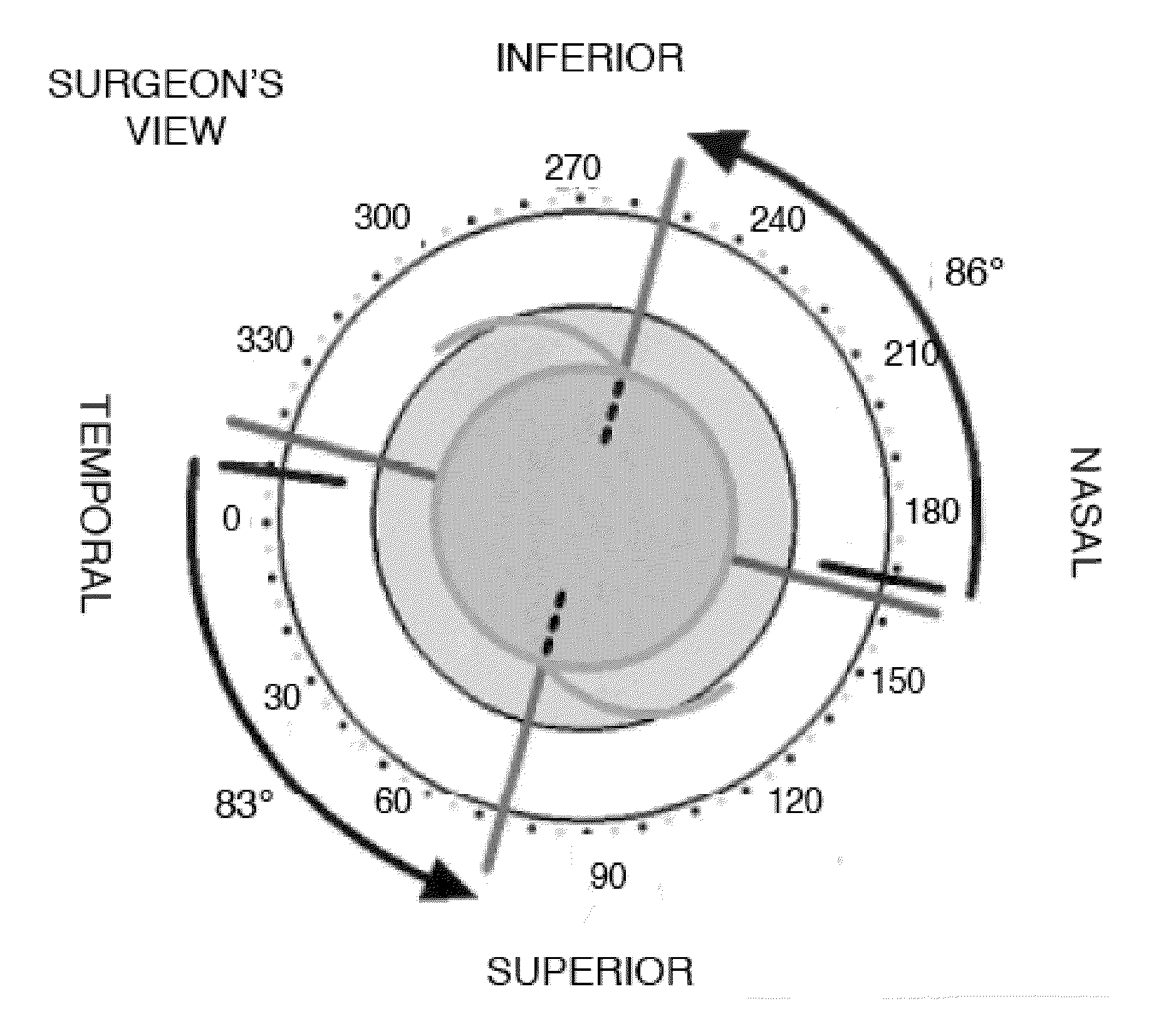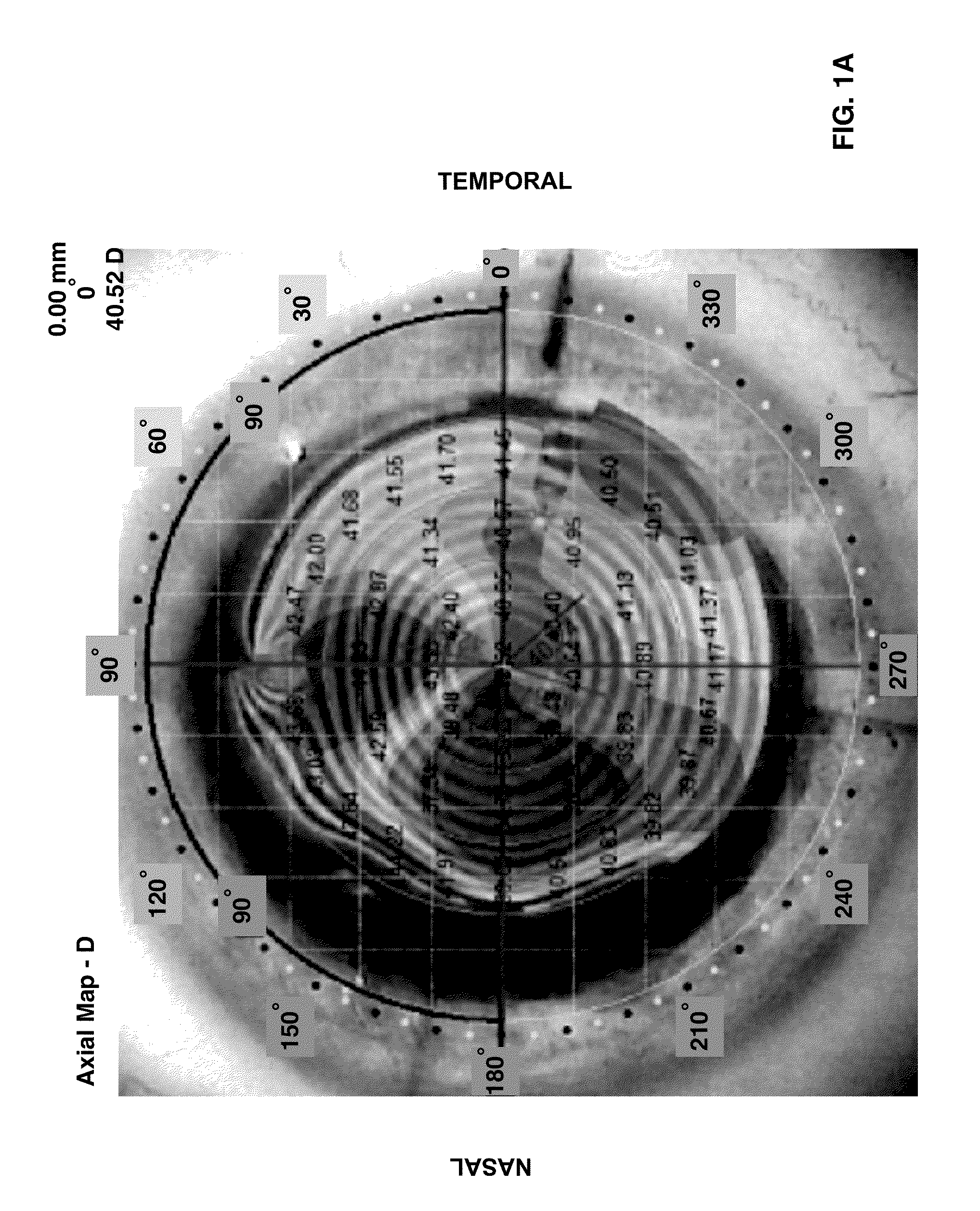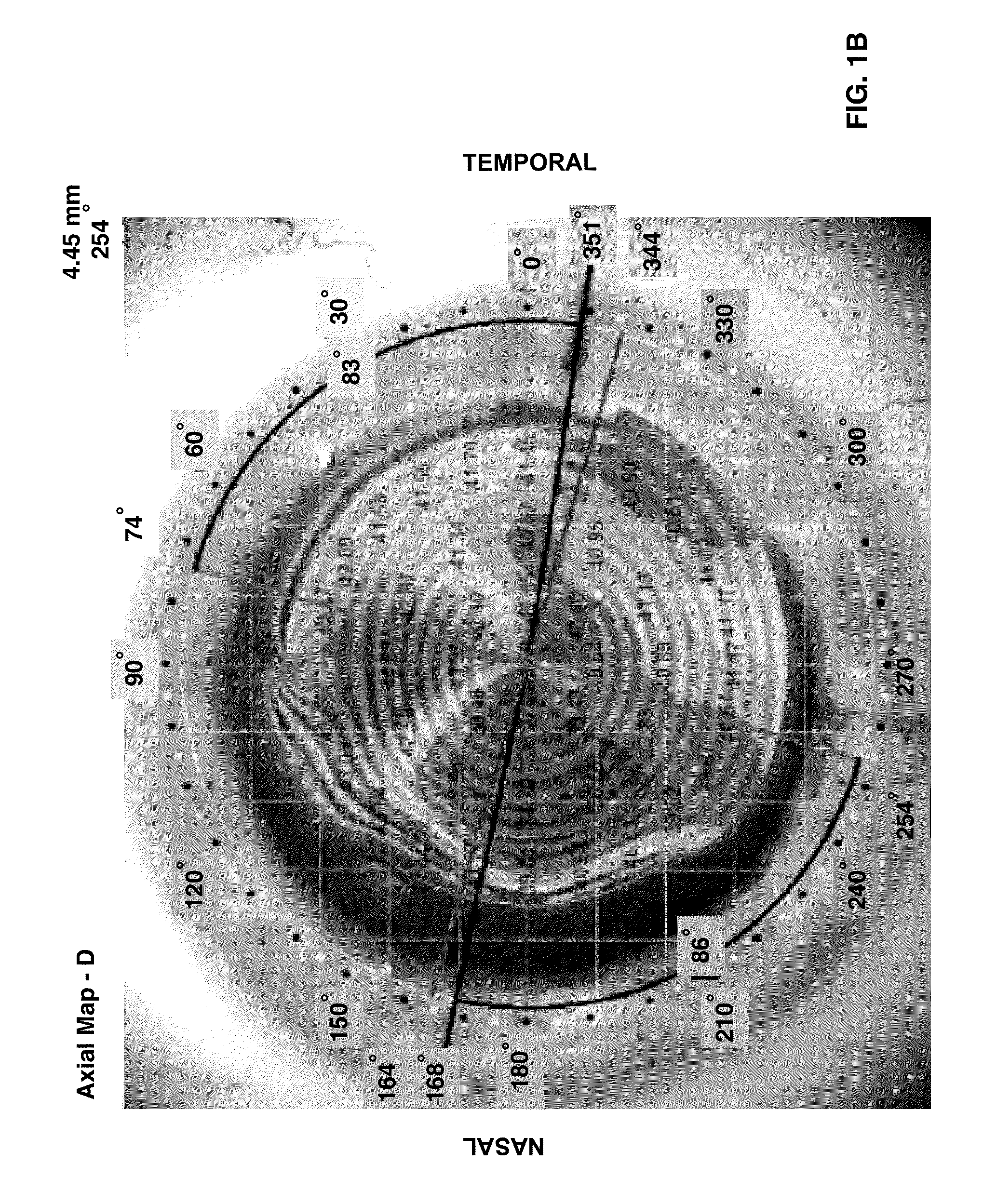Tools and methods for the surgical placement of intraocular implants
a technology for intraocular implants and surgical placement, applied in the field of ophthalmology and ophthalmic surgery, can solve the problems of large loss of effective correction of toric iol, poorly controlled outcome, and inability to achieve the extra work required to maintain the necessary controlled measurement, so as to minimize or eliminate post-operative residual astigmatism, minimize or eliminate residual astigmatism, and optimize astigmatic correction
- Summary
- Abstract
- Description
- Claims
- Application Information
AI Technical Summary
Benefits of technology
Problems solved by technology
Method used
Image
Examples
example 1
Corneal Tomography with Toric Caliper
[0069]FIG. 1A shows the corneal topography (CT) over the eye image with a vertical red line and a horizontal black line. The horizontal line is the caliper tool at set up (0 degrees). This patient has vertical astigmatism where the red line is on 90 degrees, however, generally, the line usually is not at a perfect 90 degrees. For example, FIG. 2A shows Patient 2's eye with astigmatism where the steep axis is at 97 degrees. This is more typical, and note that the second patient's flat axis is 90 degrees away at 7 degrees. These red and blue lines are automatically generated by the corneal topography software as the flat and steep axes of the cornea as determined by keratometry which all CT systems emulate.
[0070]In this software, if the doctor does not agree or if the astigmatism is not as perfect and symmetric as it is in the case of Patient 2 then the doctor can alter these red and blue determinant lines of the steep and flat axes of the cornea. ...
example 2
Action / Response Steps
General Functional Requirements
[0075]The Data Entry module displays the entry fields and labels for the user-entered pre-op data and the calculated fields as shown in Table 1 (FIG. 1).
TABLE 1Required user entered fields:IOL spherical power (D)surgically induced astigmatism (d)incision location (0-360°)Optional user entered fields:axial lengthanterior chamber depthcentral corneal thicknesslens thicknessretinal thicknessCalculated fields:pre-op corneal astigmatism(x.xxd @ yy°)cross cylinder result (corneal plane)(x.xxd @ yy°)axis of placement (°)lens data for recommended iols#1, #2 or #3:expected residual astigmatism(x.xxd @ yy°)cylinder power at iol plane (d)cylinder power at corneal plane (d)
[0076]The software also houses a database of lenses with varying cylinder power. A representative example is shown in Table 2.
TABLE 2at IOL planeat corneal planeCylinder Power1.501.032.251.553.002.06Potential Future Powers3.752.574.503.095.253.606.004.11
[00...
PUM
 Login to View More
Login to View More Abstract
Description
Claims
Application Information
 Login to View More
Login to View More - R&D
- Intellectual Property
- Life Sciences
- Materials
- Tech Scout
- Unparalleled Data Quality
- Higher Quality Content
- 60% Fewer Hallucinations
Browse by: Latest US Patents, China's latest patents, Technical Efficacy Thesaurus, Application Domain, Technology Topic, Popular Technical Reports.
© 2025 PatSnap. All rights reserved.Legal|Privacy policy|Modern Slavery Act Transparency Statement|Sitemap|About US| Contact US: help@patsnap.com



